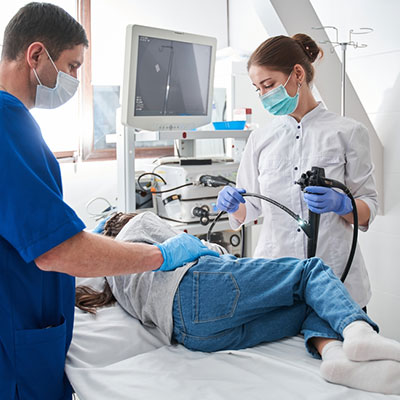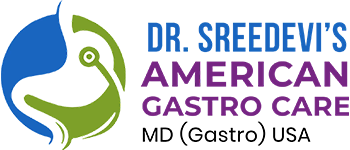Endoscopy
Endoscopy is a minimally invasive medical procedure that involves inserting a flexible tube with a light and camera, called an endoscope, into the body to visualize internal organs and structures. In gastroenterology, endoscopy plays a crucial role in diagnosing, monitoring, and treating various gastrointestinal (GI) conditions by Gastroenterologist . It allows direct visualization of the esophagus, stomach, duodenum, colon, and other parts of the GI tract, enabling physicians to identify abnormalities such as inflammation, ulcers, tumors, polyps, and bleeding sources. Additionally, endoscopy facilitates tissue sampling or biopsies for histopathological analysis, aiding in the diagnosis of cancers, infections, or inflammatory diseases like Crohn's disease and ulcerative colitis. Therapeutic interventions are also possible during endoscopy, including removing polyps, stopping bleeding through cauterization, dilating strictures, and even performing minimally invasive procedures like stent placement. The procedure is generally safe, well-tolerated, and offers real-time insights that enhance diagnostic accuracy and treatment efficacy. Overall, Upper endoscopic ultrasound has revolutionized gastroenterology by providing a direct, precise, and less invasive approach to managing complex GI diseases, ultimately improving patient outcomes through early detection and targeted therapy.

When could endoscopy be suggested ?
Endoscopy is suggested in gastroenterology at Endoscopy Center when patients present with symptoms or clinical findings indicative of potential gastrointestinal (GI) pathology, such as persistent or severe dyspepsia, gastrointestinal bleeding, unexplained anemia, unexplained weight loss, or chronic diarrhea. It is also recommended for the evaluation of suspected malignancies, strictures, or ulcers, especially in high-risk individuals such as those with a history of gastric or esophageal cancer, significant risk factors, or alarm features. Furthermore, Lower Endoscopic Ultrasound is indicated for the diagnosis and management of conditions like gastroesophageal reflux disease (GERD) unresponsive to medical therapy, Barrett’s esophagus, celiac disease, inflammatory bowel disease, and for surveillance of known pre-malignant or malignant lesions. In patients with unexplained vomiting, swallowing difficulties, or persistent abdominal pain, endoscopy provides both diagnostic and therapeutic benefits. Additionally, in cases of suspected motility disorders or submucosal tumors, endoscopy with biopsy or advanced techniques like endoscopic ultrasound is valuable. The decision to perform endoscopy at American-Gastro care , Dr. Sreedevi Atluri is guided by clinical guidelines, considering the patient's age, symptom duration, severity, and associated risk factors, aiming to facilitate early diagnosis, targeted therapy, and improved clinical outcomes.
Some highlights of endoscopic procedures at American Gastro Care:
Upper endoscopic ultrasound
- Evaluate for gall stones/ pancreatitis and other lesions in the Gi tract and also obtain needle biopsies for esophageal / gastric and pancreatic lesions
- Celiac block
- Endoscopic glue and coil for gastric variceal
- Evaluation of the liver
Lower endoscopic ultrasound
- Stage and evaluate rectal cancer, lymph nodes and gastrointestinal endometriosis
Preparing for an endoscopy:
- Consult your healthcare provider at Best endoscopy hospital for instructions regarding fasting, typically abstaining from food and liquids for 6-8 hours before the procedure.
- Discontinue certain medications as advised, especially blood thinners, aspirin, or anticoagulants, to reduce bleeding risk.
- Inform the doctor about allergies, previous reactions to sedatives, or existing health conditions.
- Arrange for transportation post-procedure, as sedatives may impair your ability to drive.
- Follow any bowel preparation protocols if a Colonoscopy Treatment or upper GI procedure requires it, including taking prescribed laxatives.
- Wear comfortable, loose clothing and remove jewelry or dentures if necessary.
- Arrive early to complete pre-procedure paperwork and receive sedation or anesthesia as planned.
- Post-procedure, adhere to dietary guidelines provided, typically starting with liquids and gradually progressing to solid foods.
- Monitor for any complications such as severe pain, bleeding, or signs of infection, and contact your healthcare provider if they occur.
